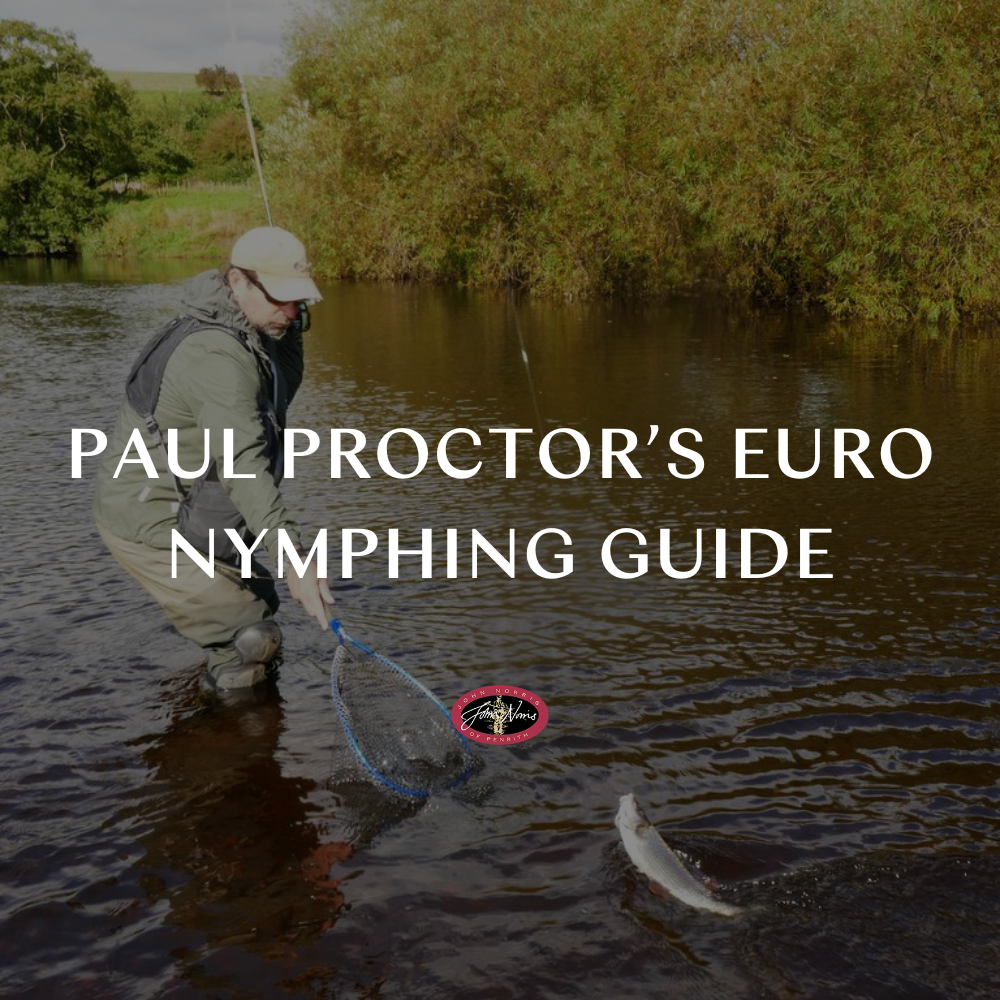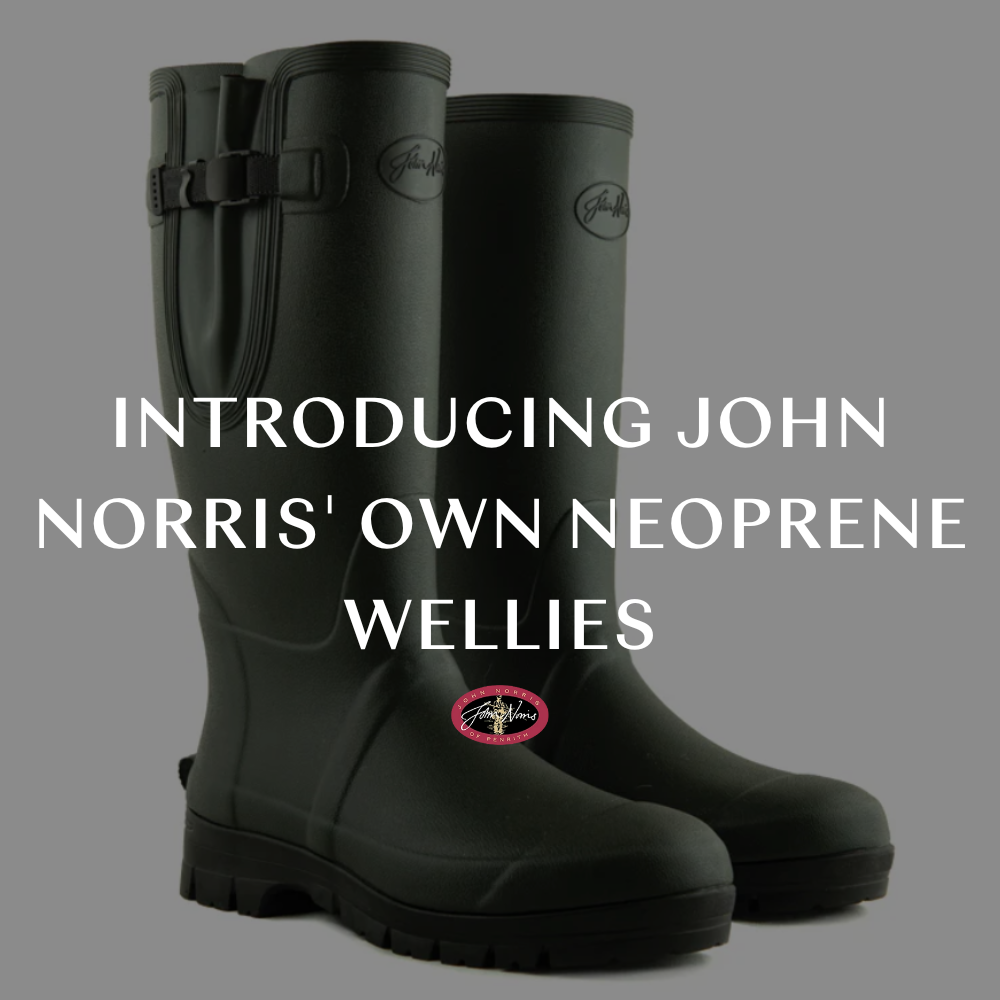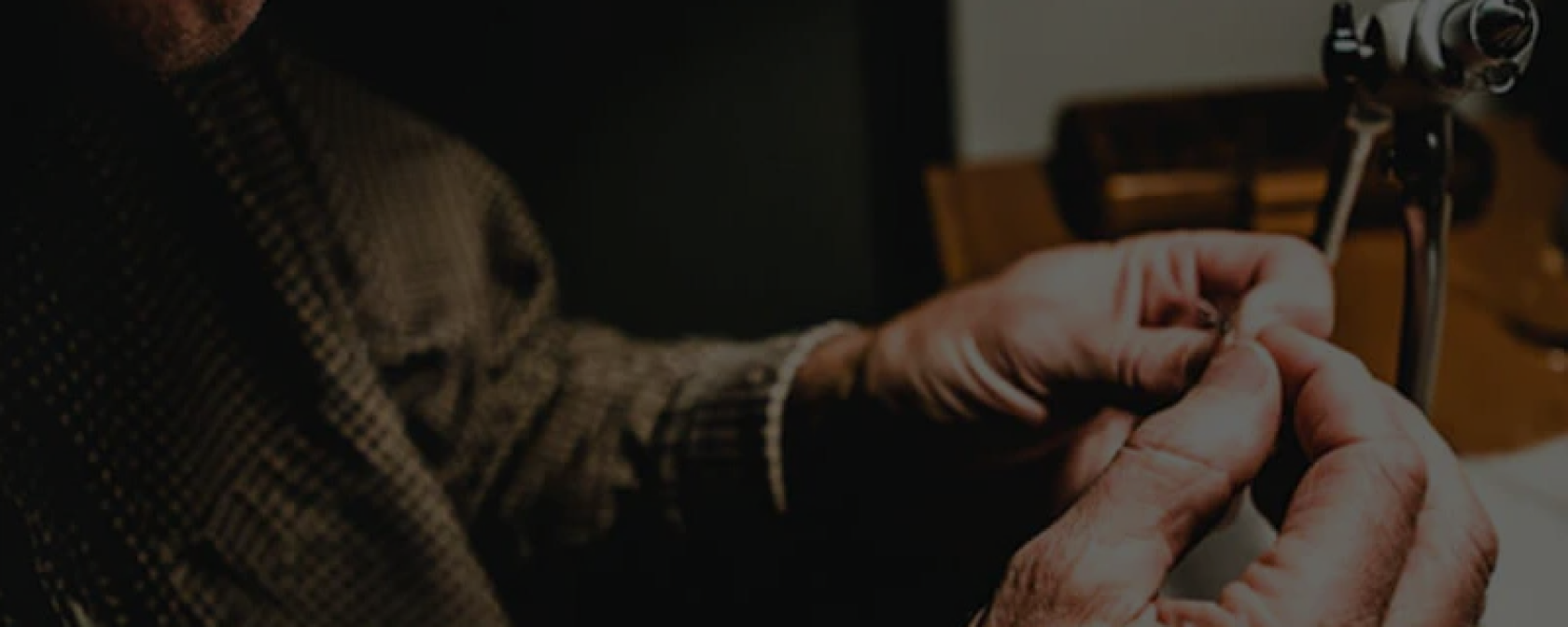Paul Procter’s Top Low Water Fly Fishing Tips

As the summer of 2025 rolls in, anglers across The Lake District and beyond are met with low, clear rivers. Many believe our rivers and streams are at their best when fining down following a spate. Few can dispute this, as during such conditions, chances are you will struggle to find a vacant pool. Why? Because every man and his dog is out searching for a trout or two. Water pumping through higher than normal and at a fair clip makes our approach easier, as trout struggle to detect us. Odds on, a hint of colour will exist too, which again masks our intentions. With the promise of wriggling bugs being washed downstream to waiting fish, it is obvious why folk nip out in high hopes.
As rivers shrink, anglers willing to wet a line begin to dwindle too, especially if bright sun or hot weather curses us. This is especially the case in high summer during July and August. Mind, the spring of this season saw an unprecedented dry spell across The Lake District and beyond. Whether you are booked into a swanky lodge, taking a few days' leave, or stealing an hour here and there during the family break, Guideline Pro and John Norris Guide Paul Procter shares some pointers to help you get the best out of shrinking rivers this summer.
Downsize
Whilst AFTMA rods rated for 4 or 5 lines are the standard fare under normal conditions, low and clear water calls for something of a more delicate nature. Rods rated for 3-weight, or even 2-weight lines offer a distinct advantage. Outfits like the Guideline NT11 9’6” 3-weight or the Tactical LPX 9’9” 2-weight will allow you to deliver your flies with little fuss and go unnoticed by trout. Furthermore, as such rods yield more readily, they obviously help protect finer tippets that are often required in drought conditions.
Gossamer Tippets
In truth, I am a big believer in using the strongest tippet that conditions and fly size allow. Please forget about any nonsense that fish see your tippet. If that were true, then surely they would notice a ruddy great hook bend and point protruding out of the backside of our imitations. Fish see what they want to see and perhaps the most crucial thing is presentation. Our fly must behave as naturally as possible.
When knotting on larger flies, it makes sense to deliver them on slightly heavier tippets for improved turnover. However, when it comes to the smaller, often flimsy imitations needed to fool trout in the feeble river flows of summer, finer tippets are necessary. Dropping down in tippet diameter to 6X and sometimes 7X will give you a definite edge, as it affords those small imitations a degree of freedom to conform with surface currents.
I lean towards copolymer. For a given diameter, let us say 0.13mm, it is more supple than fluorocarbon and nylon. The Guideline Power Strike in 6X and 7X will serve you well, especially when paired with a 2 or 3-weight rod.
Travel Light
In fairness, I am the worst culprit here, as I tend to carry way more kit than necessary. Usually though, this is because I prepare for a full day by the river. However, summer fishing is often carried out over short sessions when you can travel light. With that, the Guideline Experience Chestpack is perfect to house all the necessaries for an evening or daytime sortie by the river.
You might like to consider the ULBC ultra light waders as they are super lightweight and airy, allowing you to move around freely without perspiring. Admittedly, at first glance they appear flimsy, but I have been using my pair for over a year now without any problems. Do consider some kneepads, as they protect the leg area when negotiating thistles and brambles along unruly sections of bank.
Use Your Polaroids
As a fly fishing guide and instructor, part of the drill is to make anglers aware of the importance of eye protection. After all, we potentially execute thousands of casts each time we venture out. A decent pair of polaroids not only protect your eyes from wayward casts, they allow us a privileged glimpse into the trout’s world when rivers are rendered clear during drought conditions.
In fact, most of my summer fish are sighted below the surface before I make a cast. In bright conditions, opt for grey or amber coloured lenses. Cloudy, dull days are best tackled using yellow lenses.
Do a Dawn Raid
Come a heatwave, the coolest period of day will be just before dawn. Believe it or not, in extreme heat this is when insects will choose to hatch or be most active. I have often experienced Caenis and Blue-Winged Olives at first light and the trout have been keen to take advantage.
Although it will not feel like it at the time, dragging your bottom out of bed at 3am in midsummer can result in blistering sport. Remember too, you will probably have the whole place to yourself. Being left undisturbed all night, trout are likely to be hugging the margins.
Look for Streamy Water
Obviously, shallow water racing over stones or boulders is well oxygenated. Such places not only attract fish due to this, but riffling water acts as a curtain that masks fish from aerial predators, making them feel safe when feeding.
Furthermore, these areas are where most invertebrates develop. Be it pocket water or a pool neck, it makes sense then to search out those streamy parts of a river.
Use a Peak to Take a Peek
To some degree, I feel I am preaching to the converted here as we fly fishers love hats and caps. That said, I often bump into anglers with no head gear whatsoever. Not only does a peak on a cap help shield our eyes and face from fly-away casts, it cuts out glare. When coupled with polaroids mentioned above, it improves our odds of spotting trout swimming about.
Furthermore, shading our eyes reduces the odds of eyestrain and the consequent headache that can occur on hot, bright days. Granted, I am from the baseball camp of headgear, as I find them light and quick drying, but the important thing is to don a hat with a sufficient peak.
Focus on Foam Lanes
Foam lanes tend to filter food more readily and therefore act like a conveyor belt to waiting trout. Bear in mind too that very much like ruffled water, a carpet of foam provides cover for trout, making them feel safe.
It might only be a faint line of bubbles trailing off an innocuous looking stone, or something more tangible like a swathe of bubbles created by a fallen tree. Either way, make a point of searching any foam lane, even given the absence of feeding fish.
Check Out Back Eddies
Whether it is the size of a dustbin lid or a small swimming pool, back eddies attract trout like bees to honey. In my eyes, the bigger the back eddy, the better. Those where a huge mat of foam collects in their centre are capable of holding several trout at any one time.
Obviously, accumulated foam suggests little if any flow. Given this, trout tend to cruise around these areas, sipping down all and sundry trapped in the foam.
Personally, I find ambush tactics best now. Get yourself tucked up next to a back eddy with your line prepared, ready to cast. Once you see a rise, it is simply a matter of getting your fly in front of the disturbance as quickly as possible. Mind, determining which direction a fish is moving can be challenging.
I find crouching down helps, as I am able to see a push of water in front of the rise to determine a trout’s path of travel. It is the reason too I knot on a beetle pattern, as the distinct plod can turn the head of a patrolling fish.
Stay Hydrated
In our bid to search out fish, sometimes we neglect taking on liquids. I speak from experience here when it is all too easy to ignore the sensation of thirst in a bid for just one more cast. Inevitably, a mild headache kicks in at best, but the situation can also be worse.
Please remember to take on liquids regularly, which are best housed in a cooling thermos flask, perhaps from Yeti.
Become a Night Owl
Those who work 9 to 5 hours can go about their business in the comfort of not missing out. Warm summer months are notorious for the evening rise, when trout often throw caution to the wind. It is usually Blue-Winged Olives and caddisfly that are responsible for heightened activity. Both these fly species prefer to emerge as darkness approaches and with lots of fly coming off all at once, the consequent rise can reach fever pitch.
Sometimes, I do not venture out until 10pm and will remain on the river until the wee small hours. One item you will find invaluable now is a head torch, but be mindful not to shine this on the water when changing flies or untangling a snarled leader.

Exercise Restraint
Finally, we owe it to our quarry to be respectful at all times. Salmonids in particular are susceptible when water temperatures climb. Please be mindful that above 20 degrees Celsius is the danger zone for trout, when they may struggle to recover from lactic acid after the fight.
For that reason, once the water temperature reaches 20°C, I refrain from fishing. A reliable thermometer makes this decision easier.

Low water and high temperatures can present a challenge, but they also create opportunities for considered anglers. By adjusting your approach, travelling light, and tuning in to trout behaviour, you can enjoy some of the most rewarding fishing of the year.
This is just one instalment in our seasonal guest blog series, so be sure to check out the others for more timely tips to improve your fishing throughout the year. For those ready to gear up, visit John Norris in-store or online. With expert advice, a hand-picked selection of top-quality fly fishing tackle, and everything you need for success on the water, John Norris is your trusted partner this fly fishing season and beyond.















